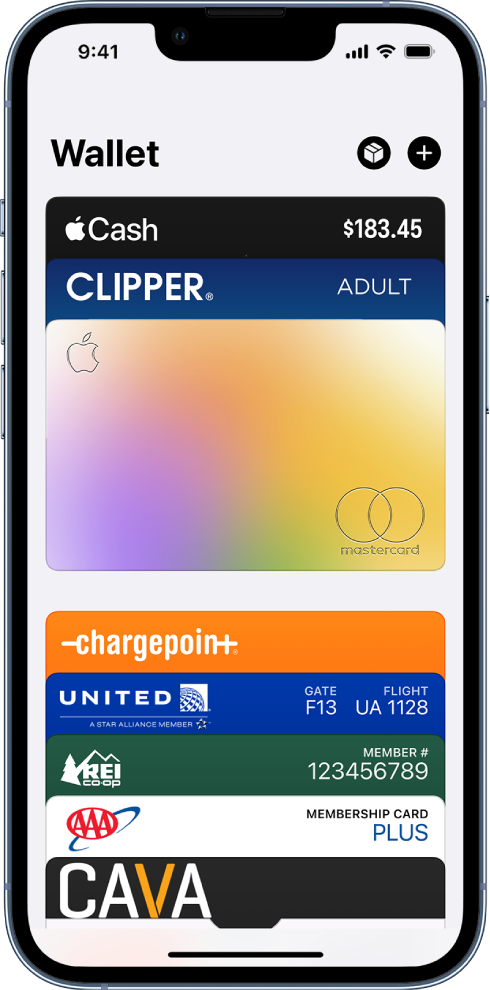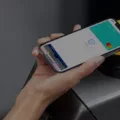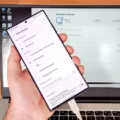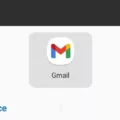The Wallet app has become an essential tool for many of us, allowing us to conveniently store and manage our payment cards, boarding passes, tickets, and more, all in one place. However, it can be frustrating when the app freezes or appears blank, preventing us from accessing our important information. In this article, we will explore some common issues with the Wallet app and provide solutions to help get it back up and running smoothly.
If you find that your Wallet app is frozen or blank, the first step is to force close the app. On an iPhone or iPad, you can do this by double-clicking the home button (or swiping up from the bottom on newer models) to bring up the app switcher, then swiping up on the Wallet app to close it. On an Android device, you can typically access the app switcher by tapping the square or recent apps button, then swipe the Wallet app off the screen to close it.
Once you have force closed the app, the next step is to sign out of your Apple ID or Google account, depending on the platform you are using. This can help resolve any account-related issues that might be causing the app to freeze or appear blank. On an iPhone or iPad, you can sign out of your Apple ID by going to Settings > [Your Name] > Sign Out. On an Android device, you can sign out of your Google account by going to Settings > Accounts > Google, then tap on your account and select “Remove account” or “Sign out”.
If force closing the app and signing out of your account does not resolve the issue, the next step is to force reboot your device. This can help clear any temporary glitches or conflicts that might be affecting the app. The process for force rebooting varies depending on the device you are using, so it’s best to consult the manufacturer’s support documentation or website for specific instructions.
If you are experiencing problems specifically with tap to pay transactions, there are a few additional steps you can take to troubleshoot the issue. Firstly, make sure that your Google Wallet app is up to date. You can typically update apps on Android by going to the Google Play Store, tapping on the menu icon (three horizontal lines), then selecting “My apps & games” and updating the Wallet app if available.
Additionally, ensure that your Android device is running on version 7.0 or above, as tap to pay functionality may not be supported on older versions. You can check your Android version by going to Settings > About phone (or About device) > Android version.
Lastly, make sure that Google Play Services are up to date on your device. This is important as Google Play Services is responsible for handling tap to pay transactions. You can update Google Play Services by going to the Google Play Store, searching for “Google Play Services” and tapping the “Update” button if available.
If you are using an Apple device, the troubleshooting steps may vary slightly. To fix issues with tap to pay transactions on an iPhone or iPad, you can try selecting a new default card in your Wallet settings. On an iPhone, go to Settings > Wallet & Apple Pay, then select a different card from the menu. On an iPad, go to Settings > Wallet & Apple Pay, then choose a card from the list.
On a Mac with Touch ID, you can also change the default card in your Wallet settings. Simply go to System Preferences > Wallet & Apple Pay, then select a card from the menu.
If you have a Samsung phone and are experiencing issues with your Wallet app, you can try turning on your phone and touching and holding the lock screen. Follow the on-screen instructions to sign in and access your Wallet app. If you want to add or replace a shortcut for the Google Wallet app, tap on the red minus icon next to the app to remove it, then tap on the plus icon to add it back.
The Wallet app is a convenient tool for managing your payment cards and other important information. However, if you encounter issues such as freezing or a blank screen, there are several steps you can take to resolve the problem. By force closing the app, signing out of your account, and force rebooting your device, you can often resolve minor glitches or conflicts. Additionally, ensuring that your app and device are up to date, and selecting a new default card if necessary, can help fix issues with tap to pay transactions. Remember to always keep your device and app updated to enjoy a smooth and hassle-free experience with your Wallet app.

Why is Your Apple Wallet App Not Working?
There can be several reasons why your Apple Wallet app may not be working properly. Here are some possible causes:
1. Software glitch: Sometimes, the app may freeze or become unresponsive due to a software glitch. This can happen if the app is not updated to the latest version or if there are bugs in the current version.
2. Network connectivity issues: The Wallet app relies on a stable internet connection to access and update your passes, tickets, and cards. If your device has poor or no network connectivity, the app may not function properly.
3. Apple ID sign-in problem: If you are not signed in to your Apple ID or if there is an issue with your Apple ID credentials, it can prevent the Wallet app from working correctly.
4. Device storage limitations: Insufficient storage space on your device can also affect the performance of the Wallet app. If your device is low on storage, it may not be able to load or display your passes and cards properly.
5. Compatibility issues: In some cases, the Wallet app may not be compatible with certain iOS versions or device models. If you are using an older iOS version or an unsupported device, it may cause the app to malfunction.
To troubleshoot and resolve these issues, you can try the following steps:
1. Update the Wallet app: Go to the App Store and check for any available updates for the Wallet app. Install the latest version to ensure that you have the most stable and bug-free version.
2. Check your network connection: Make sure that your device is connected to a stable Wi-Fi or cellular network. You can try switching between Wi-Fi and cellular data to see if it resolves the issue.
3. Sign out and sign in to your Apple ID: Open the Settings app, tap on your Apple ID at the top, and scroll down to find the “Sign Out” option. After signing out, sign back in with your Apple ID credentials and check if the Wallet app starts working again.
4. Clear storage space: Delete unnecessary files, photos, or apps from your device to free up storage space. This can help improve the performance of the Wallet app.
5. Restart your device: Press and hold the power button (or power button and volume button) until the “Slide to power off” slider appears. Slide it to turn off your device, then press and hold the power button again to restart it. This can help refresh the device and resolve any temporary software issues.
If none of these steps resolve the problem, you may need to contact Apple Support for further assistance.
What to Do When Wallet is Not Working?
When you encounter issues with tap to pay transactions on your Google Wallet, there are a few steps you can take to try and resolve the problem. Follow these steps:
1. Ensure your Google Wallet app is up to date: It’s important to have the latest version of the Google Wallet app installed on your device. Outdated versions may have bugs or compatibility issues with newer Android versions. You can update your apps by going to the Google Play Store, searching for “Google Wallet,” and tapping the “Update” button if available.
2. Check your Android version: Tap to pay transactions require Android version 7.0 or above. To check your Android version, go to your device’s settings, navigate to “About phone” or “About device,” and look for the “Android version” or “Software information” section. If your device is running an older Android version, consider updating it if possible.
3. Update Google Play Services: Google Play Services is a crucial component that allows various Google apps, including Google Wallet, to function properly. To ensure you have the latest version, go to the Google Play Store, search for “Google Play Services,” and tap the “Update” button if available.
4. Restart your device: Sometimes, a simple restart can resolve temporary glitches or conflicts that may be affecting the functionality of Google Wallet. Restart your device by pressing and holding the power button, then selecting the “Restart” option.
5. Clear cache and data: If the above steps didn’t solve the issue, you can try clearing the cache and data of the Google Wallet app. Go to your device’s settings, navigate to “Apps” or “Applications,” find and tap on “Google Wallet,” and then select the options to clear cache and data. Note that clearing data will remove any saved payment information, so be prepared to re-enter it if required.
6. Contact support: If the problem persists, it’s recommended to reach out to Google Wallet support for further assistance. They can provide specific troubleshooting steps or guide you through any necessary updates or settings adjustments.
Remember, each device and software version may have slight variations in settings and steps. These general instructions should help you troubleshoot and resolve common issues with Google Wallet.
How Do You Restart Your Apple Wallet?
To restart your Apple Wallet, follow the steps below:
1. On your iPhone, open the Settings app.
2. Scroll down and tap on “Wallet & Apple Pay.”
3. In the “Transaction Defaults” section, you will find the option to set a default card. Tap on it.
4. A list of your added cards will appear. Choose the card you want to set as the default.
5. Once you’ve selected the new default card, it will be automatically updated in your Apple Wallet.
Alternatively, if you are using a Mac with Touch ID:
1. Go to the Apple menu and select “System Preferences.”
2. In the System Preferences window, click on “Wallet & Apple Pay.”
3. From the menu on the left, select the card you want to set as the default.
4. Your default card will now be updated in your Apple Wallet.
If you are using an iPad:
1. Open the Settings app on your iPad.
2. Scroll down and tap on “Wallet & Apple Pay.”
3. Select the option to set a default card.
4. Choose the card you want to set as the default from the list.
5. Your default card will be updated in your Apple Wallet.
By following these steps, you can easily restart your Apple Wallet and set a new default card.
How Do You Get Your Wallet to Work?
To get your Google Wallet to work on your Samsung phone, follow these steps:
1. Turn on your phone by pressing the power button.
2. On the lock screen, touch and hold it to access the options.
3. Follow the on-screen instructions to sign in to your phone using your preferred method (PIN, pattern, password, or biometrics).
4. Once you’re on the home screen, you can customize your shortcuts by tapping and holding the app icons. If you want to replace an existing shortcut, tap the red minus icon next to the app you want to remove. If you want to add a new shortcut, tap the plus icon.
5. Look for the Google Wallet app in your app drawer or search for it using the search bar at the top of the screen.
6. Once you find the Google Wallet app, tap on it to open it.
7. If you haven’t set up Google Wallet yet, follow the on-screen instructions to set up your account and add your payment methods.
8. If you have already set up Google Wallet, you should be able to use it for various purposes like making payments, sending money to others, or managing your payment methods.
9. If you encounter any issues or need further assistance, you can refer to the Google Wallet help center or contact their customer support.
Remember to keep your Google Wallet app updated to ensure you have the latest features and security enhancements.
Conclusion
If you are experiencing issues with your Wallet app such as it being frozen or blank, there are several steps you can take to resolve the problem. Firstly, force close the app on your device. This can typically be done by double-clicking the home button (on iPhones with a home button) or swiping up from the bottom of the screen and then swiping the app away.
Next, sign out of your Apple ID and then force reboot your device. To force reboot your device, refer to the specific instructions for your device model provided by Apple Support.
If you are having problems with tap to pay transactions, make sure that your Google Wallet app is up to date. You can do this by checking for app updates in the Google Play Store. Additionally, ensure that your Android version is 7.0 or above and that Google Play Services are also up to date.
For Apple devices, you can adjust your default card settings in the Apple Wallet settings. On a Mac with Touch ID, go to System Preferences > Wallet & Apple Pay. On an iPad, go to Settings > Wallet & Apple Pay. From there, you can select a new default card to use for transactions.
If you are using a Samsung phone, you can create a shortcut for the Google Wallet app on your lock screen. Simply touch and hold the lock screen, follow the on-screen instructions to sign in, and then add or replace a shortcut for the Google Wallet app.
By following these steps, you should be able to address any issues with your Wallet app and resume using it smoothly.








